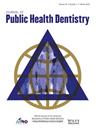Individuals with disabilities face elevated risks of adverse oral health outcomes compared with the general population, including worse periodontal health, increased edentulism, and untreated dental decay. Given the varied impacts of different disabilities on people's health and well-being, this study aims to investigate diverse associations between untreated decay and cognitive, physical, emotional, and sensory disabilities among US adults.
This cross-sectional study analyzed questionnaire and clinical examination data on 7084 adults (≥20 years) from the 2015–18 National Health and Nutrition Examination Survey cycles. Sociodemographics, oral health behaviors, health conditions, and disability were all examined. The prevalence of tooth decay was calculated as the proportion of adults with untreated decay. Survey-weighted multivariable logistic regression was used to assess associations between disability and untreated decay.
In general, untreated decay was more than twice as prevalent in individuals with three or more disabilities as in those without any disabilities (34.5% vs. 13.2%, p < 0.001). After adjusting for confounders, lack of functional dentition was the most significant predictor of untreated decay prevalence (adjusted odds ratio: 2.97, 95% CI: 2.37–3.72). Other significant factors were younger age (20–44), non-Hispanic black race or ethnicity, low-income status, having an underlying chronic condition, not having a past-year dental visit, symptomatic dental visits, and current tobacco use.
No associations were found between disability type (cognitive, emotional, physical, and sensory) and untreated decay among community-dwelling US adults. Several health-related, social, and behavioral factors emerged as primary predictors of untreated decay. Further research is needed to explore disability types and dental caries determinants.



